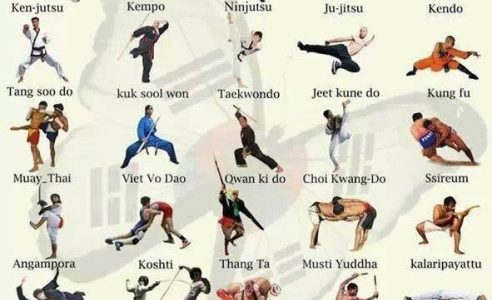The Trip And Change Of Martial Arts: Discovering Its Historical Structures And Modern-Day Methods
The Trip And Change Of Martial Arts: Discovering Its Historical Structures And Modern-Day Methods
Blog Article
Team Writer-Busk Sun
Enter the world of martial arts, where ancient beginnings and modern-day strategies collide in an electrifying trip of technique and self-discovery.
As you explore the background and advancement of this exciting art type, prepare to be captivated by the social influences, technical innovations, and extensive ideology that have shaped it over centuries.
From the battlefields of ancient human beings to the training grounds of today, martial arts have actually stood the test of time, regularly adapting and growing.
Each strike, each motion, carries with it the weight of plenty of years of custom and knowledge, gave with generations. This is a story of resilience, of warriors who sought not only physical prowess, but also inner strength and consistency.
Join us on this remarkable expedition as we uncover the secrets, the legends, and the transformational power of martial arts.
Prepare yourself to be influenced, tested, and for life transformed by the background and advancement of martial arts.
Social Influences on Martial Arts
As you explore the background and evolution of martial arts, you'll swiftly uncover the remarkable methods which cultural impacts have actually shaped these battle techniques.
From the ancient worlds of China and India to the more recent advancements in Japan and Brazil, martial arts have been heavily affected by the cultures in which they stemmed.
As an example, Chinese martial arts, such as Martial Art and Tai Chi, are deeply rooted in the viewpoint of Taoism and the concept of Yin and Yang.
On the other hand, Japanese martial arts, like Karate and Judo, mirror the samurai warrior traditions and the worths of technique and honor.
In a similar way, Brazilian martial art, Capoeira, integrates components of African dancing and music, mirroring the social heritage of African servants in Brazil.
These cultural influences not just offer each martial art its unique attributes however also supply a deeper understanding of the historical and social contexts in which they progressed.
Technical Advancements and Martial Arts
With the increase of innovative weapons and innovative training tools, you have actually been able to improve your abilities and adjust to the ever-changing fight landscape.
https://remingtonaktcl.atualblog.com/36351528/prior-to-making-an-important-decision-it-is-advisable-to-ask-about-the-criminal-defense-lawyer-s-background-track-record-of-success-and-approach-to-communication have actually reinvented the method martial arts are exercised and taught. Virtual reality simulations now permit you to train in practical fight situations without the risk of physical harm. https://www.lawyer-monthly.com/2020/03/the-difference-between-a-defense-lawyer-and-a-trial-lawyer/ -speed cameras record every action, allowing you to assess and ideal your techniques. Wearable gadgets check your heart rate, breathing, and muscle activation, providing immediate comments on your efficiency.
Additionally, the growth of customized devices, such as resistance bands and agility ladders, has allowed you to improve your speed, stamina, and dexterity. These technical improvements have not only made training a lot more efficient however have actually likewise pressed the boundaries of what is feasible in martial arts, allowing you to get to brand-new elevations in your practice.
The Philosophy and Concepts of Martial Arts
The viewpoint and principles of martial arts are deeply rooted fit your state of mind and instilling discipline, focus, and respect in your technique.
1. Way of thinking: Martial Arts instructs you to develop a solid and resistant attitude. It enables you to get over difficulties both on and off the mat, pressing your limits and being determined despite difficulty.
2. Self-control: Martial Arts needs self-control and self-control. Through normal training and adherence to strict regulations and techniques, you learn to regulate your impulses and develop a solid job ethic.
3. Focus: Martial Arts requires intense emphasis and focus. By training your mind to be existing in the moment, you improve your capacity to respond quickly and effectively throughout battle situations.
4. Regard: Martial Arts highlights regard for oneself, teachers, training partners, and challengers. It educates you to value the skills and experiences of others, fostering a sense of sociability and gamesmanship.
Verdict
Congratulations on completing your trip via the captivating world of martial arts! Throughout this exploration, you have actually seen the abundant history and amazing development of these fight methods.
From their old origins to the modern-day techniques we see today, martial arts have been shaped by social influences.
The assimilation of innovation has also played a significant duty in revolutionizing the way martial arts are educated and practiced in the here and now day.
Nevertheless, it is necessary to bear in mind that martial arts are greater than simply physical battle. They encompass extensive ideologies and directing concepts that surpass the plain act of battling.
Take a minute to reflect on this obsolete experience and appreciate exactly how the heritage of martial arts continues to thrive in the present, transcending time and borders.
